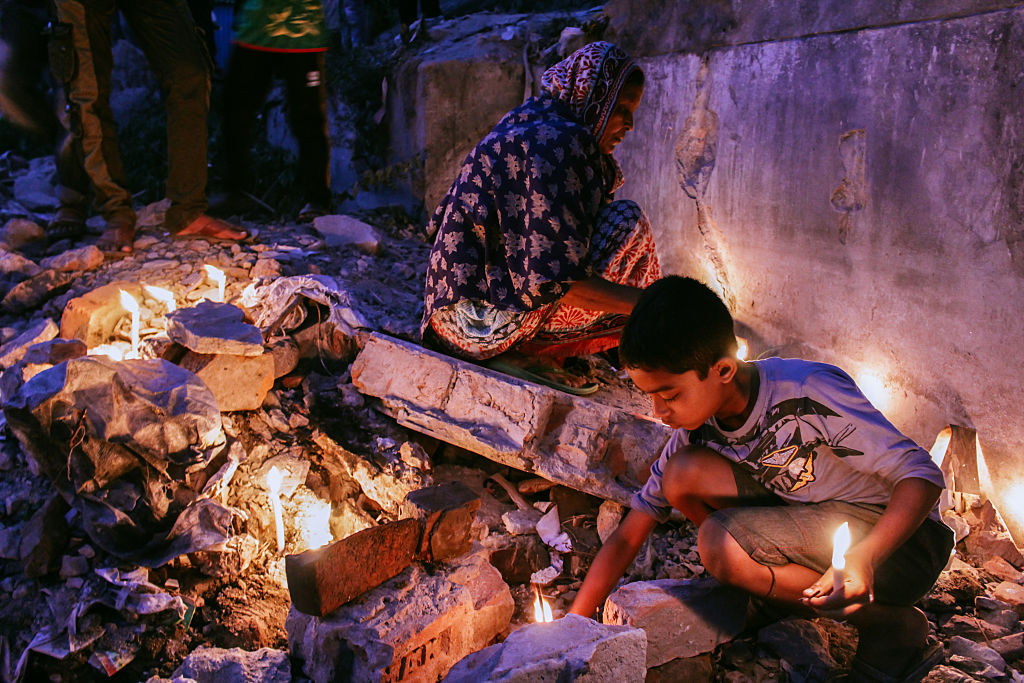
This year marked a decade since the collapse of the Rana Plaza in Dhaka, Bangladesh, which resulted in over 1,100 deaths. On the morning of 24 April 2013, workers were instructed to enter garment factories located in a building with substantial cracks and visible structural failure. It took less than 90 seconds for Rana Plaza to crumble. It was described as ‘mass industrial homicide’ at the time and survivors faced a strenuous physical and mental recovery that was compounded by extended delays in compensation from a US$30 million recovery fund—a meagre pledge from a global garment industry valued in the trillions.
As a response to international pressure, the Bangladesh Accord on Fire and Building Safety and the Alliance for Bangladesh Worker Safety were enacted between trade unions and some garment brands to ensure legally binding action on workplace safety hazards. The accord was renewed in 2021 as the International Accord for Health and Safety in the Textile and Garment Industry and extended to include commitments in Pakistan.
Significantly, it establishes a legal obligation for signatory brands to sever relations with factories that refuse to adhere to safety standards following an independent inspection. The Worker Rights Consortium estimates that since 2013, this approach has identified and addressed over 130,000 safety violations, including the immediate evacuation of 50 factories primed for disaster. The accord, however, is due to expire in October of this year.
As governments strive for more resilient global supply chains, the protection of workers can’t be overstated nor ignored. It’s essential that the garment industry is pressured to renew the accord with even stronger protections.
The accord has tangibly protected workers, but it remains voluntary for employers and there are still major brands absent from its signatory list, including Myer, Levi’s, and Walmart. These companies usually claim their self-regulation processes are sufficient, despite often being considered ineffective.
The accord also doesn’t sufficiently address broader human rights issues in supply chains. In recent years, the demands of fast fashion combined with the insecurity of the Covid-19 pandemic have subjected workers to coercive conditions like withheld benefits and salaries, extensive overtime, verbal and physical threats, sexual harassment and abuse, and more.
These conditions predominantly affect women and young people, and demand responses that consider the interaction of gender, age and other factors with workplace power dynamics. The prevalence of gender-based violence in the sector was re-exposed in 2021 when a male supervisor in a H&M supplier factory was charged with the murder of a female garment worker.
While evidence of human rights violations continues to accumulate, the industry has produced scant targeted protection for garment workers in the last decade. In its Ethical Fashion Report, Baptist World Aid revealed that a decade after the disaster, none of the companies surveyed pay a living wage.
Compounding this, climate change will add to the pain of garment industry workers. Heatwaves pose an immediate health risks for workers, and may worsen gender-based violence and harassment. The industry must go beyond ‘greenwashing’ and appropriately address the human rights implications of climate change.
Additionally, climate-related displacement is likely to increase the proportion of migrant workers in the garment industry. Migrant workers are more vulnerable to human rights abuses as they lack legal protection. They suffer higher rates of debt bondage, excessive hours, wage reduction, discrimination, usually because of threats of deportation. There’s also a growing number of home-based garment workers operating in the informal economy without targeted protections or formal contracts. Most of these are women, who must also contend with restrictive gender norms, unpaid domestic labour, and inadequate housing.
The inept national governance and corruption that permitted the Rana Plaza disaster must also be addressed. It’s essential that protections for garment workers are cemented before Bangladesh’s expected graduation from least developed country status as its exit from duty-free quota schemes will alter the international labour trade with potentially dire consequences for vulnerable workers.
The wellbeing of garment workers extends beyond the remit of one accord and must be viewed as a human rights, trade, labour, environmental, governance and development issue.
A holistic approach that involves these sectors and brings together stakeholders throughout the supply chain is underexplored and utilised. Garment workers themselves deserve greater support and a comprehensive approach that’s centred on their experiences and demands.
Saheli Women, for example, is a non-profit atelier based in Rajasthan, India, that prioritises the empowerment of female workers in order to achieve sustainable community development.
Its founder, Madhu Vaishnav, is proud to describe the model as her ‘gift to the world’. She emphasises that business, development and sustainability do not operate in silos, and that ‘women are the main pillar of sustainability, who need to be involved in the process at every level’.
“We empower one woman [in her work], and this one woman will go back and empower the entire family.”
Integrating grassroots sustainable development like this with a human rights approach throughout the supply chain is possible. And to end the ongoing exploitation and endangerment of the people who make our clothes, it’s necessary. A decade on from the Rana Plaza disaster, it’s time to take meaningful action.

